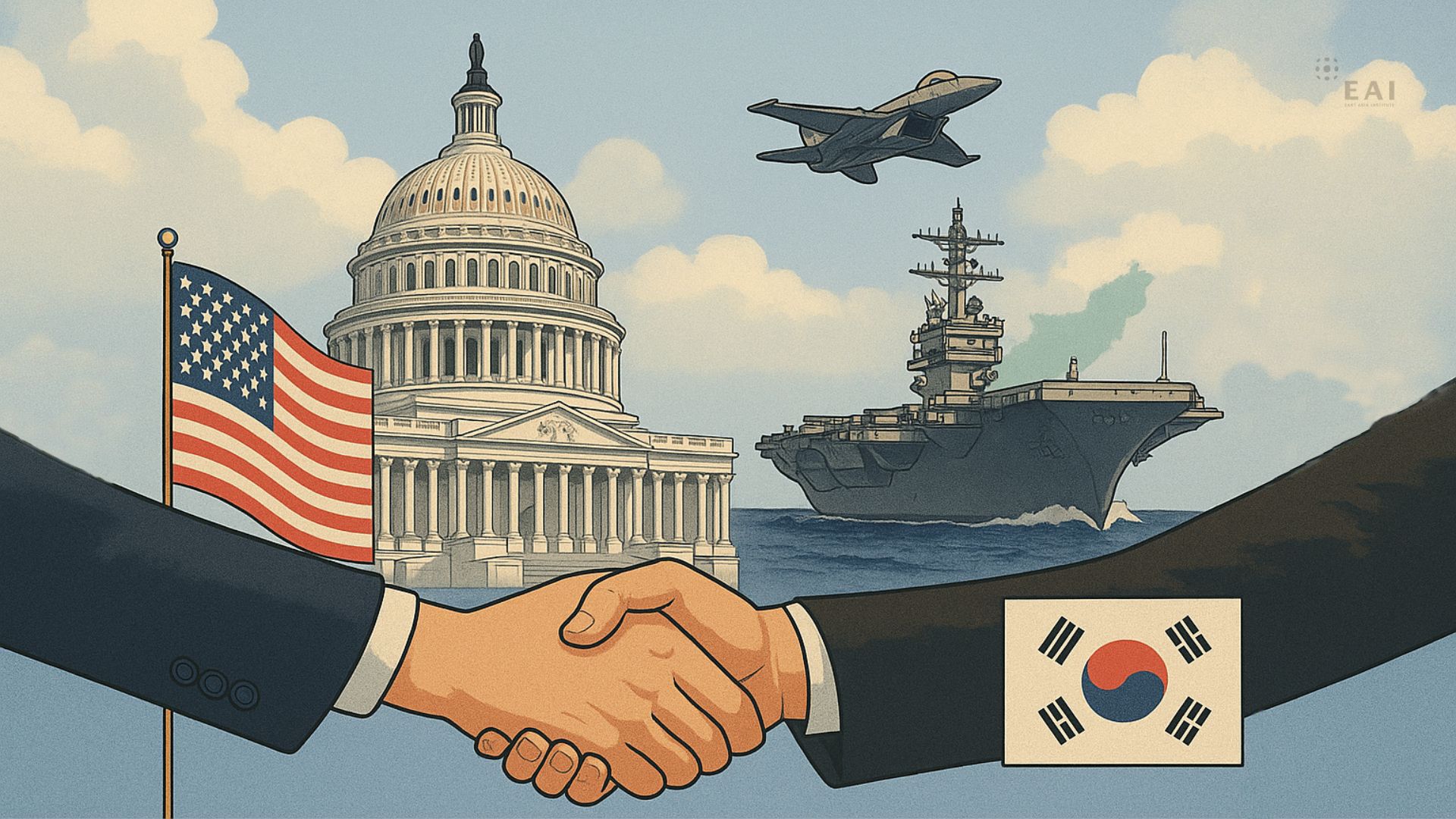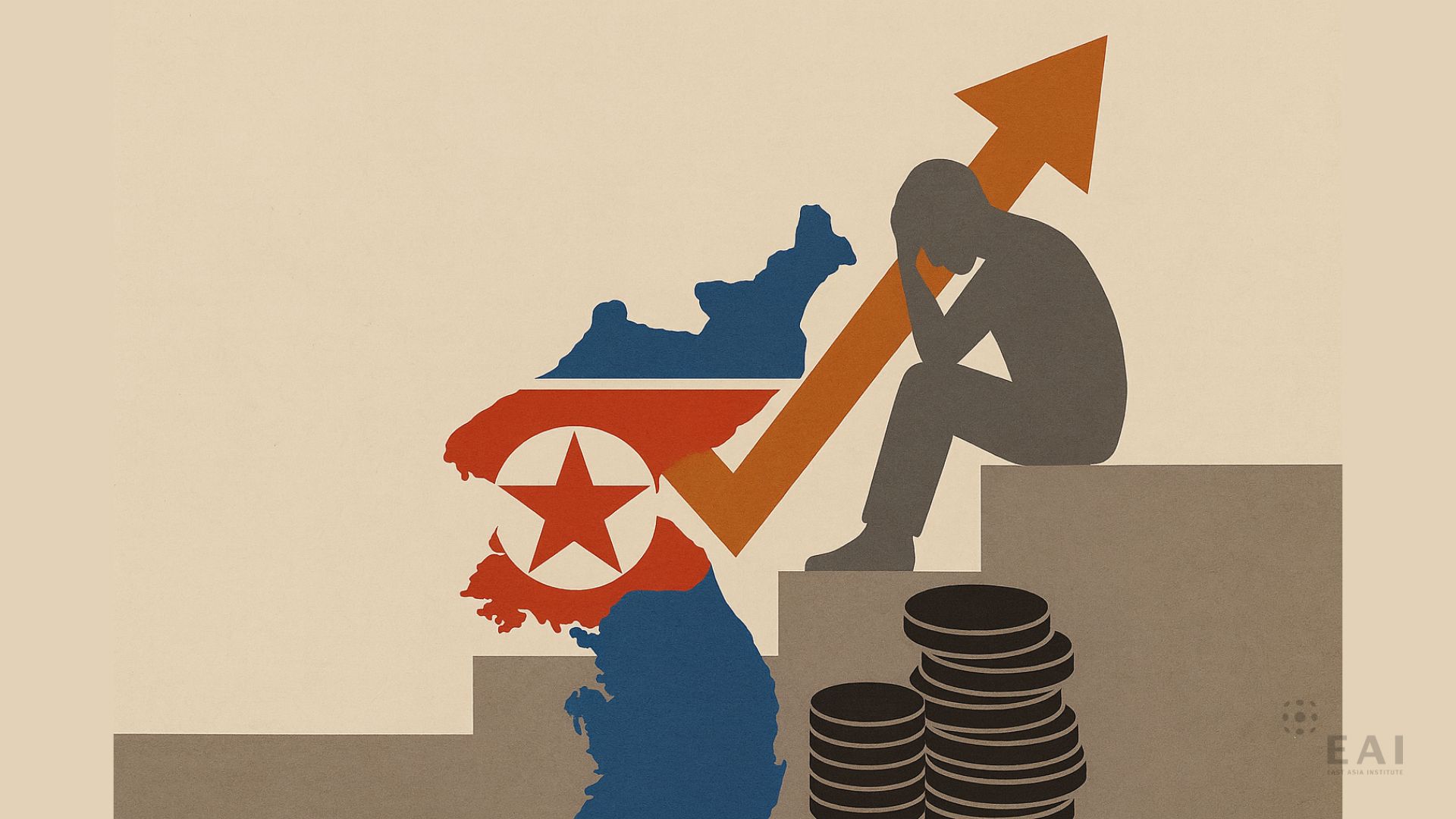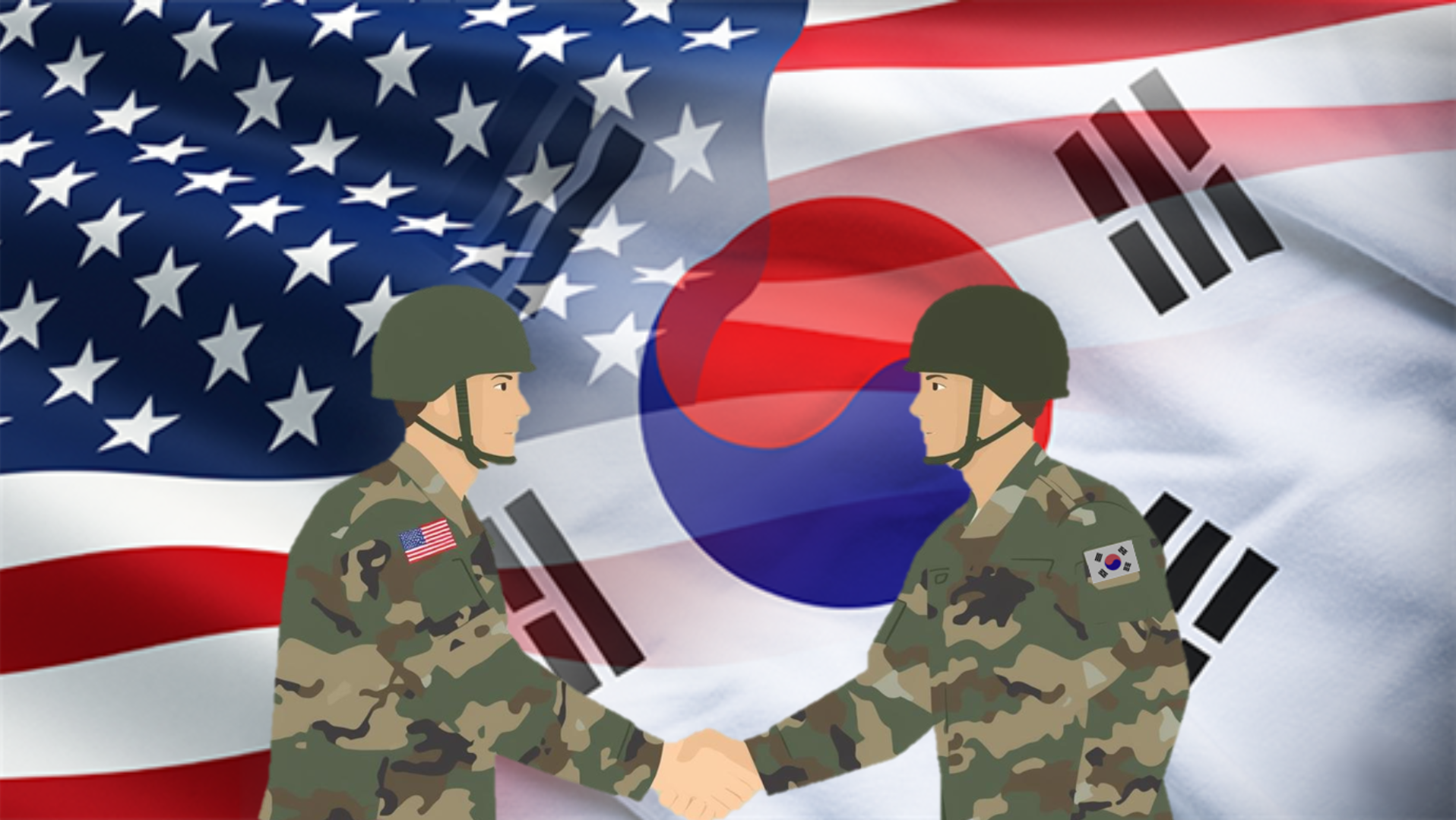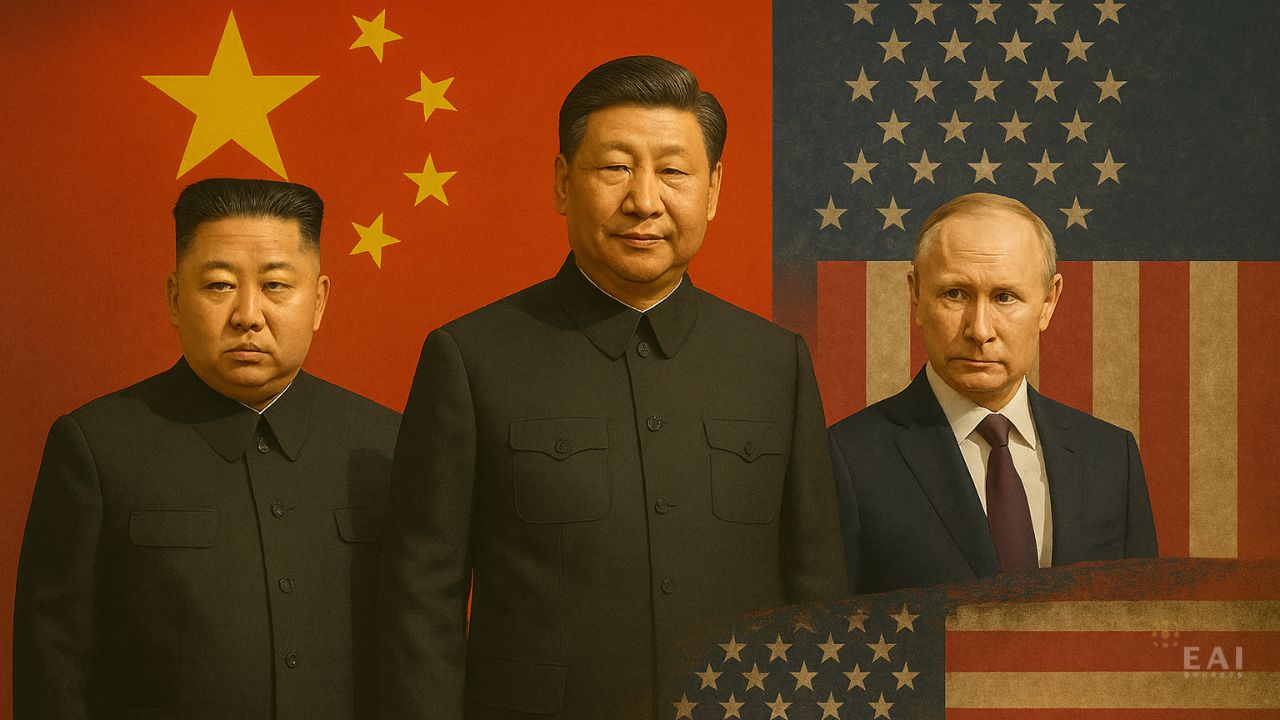■ See Korean Version on EAI Website
Introduction[1]
This paper examines the impact of conceptual ambiguities in the phased approach to denuclearization and the ‘END (Exchange–Normalization–Denuclearization) Framework’—raised in the South Korea-U.S. North Korea policy environment in the second half of 2025—on policy consistency and deterrence credibility. Despite eight months since the Trump administration took office and four months since the Lee Jae Myung administration began, the absence of official North Korea and denuclearization strategy documents from both countries has left fragmented messages—such as summit statements, interviews, and domestic/international speeches—substituting for policy. Simultaneously, North Korea has repeatedly reaffirmed its policy direction rejecting the very premise of dialogue. This was confirmed at the December 2023 Workers' Party Plenary Meeting, where inter-Korean relations were redefined as ‘hostile relations between two states,’ and reiterated at the January 2024 Supreme People's Assembly, as well as in Kim Yo-jong's January 2025 statement and Kim Jong Un's subsequent speeches. Amid these structural shifts, it is necessary to reexamine whether declarative phasing distinctions like ‘stop–reduction–abandonment’ can actually drive deterrence and negotiation dynamics.
This article poses three core questions. First, it assesses the implications of the terminological and conceptual differences between the South Korean government's proposed ‘freeze–reduction–abandonment’ and ‘stop–disarmament–complete denuclearization’ frameworks for policy choices and mutual verification systems. Second, it examines how the U.S. strengthening of homeland defense—symbolized by its layered missile defense, institutionalization of extended deterrence (NCG), and Executive Order 14186 (‘The Iron Dome for America’, a.k.a. ‘Golden Dome’)—asymmetrically intertwines with the Korean security dilemma, particularly the direct threat from short- and medium-range nuclear forces like the KN-23. Finally, it examines whether linking a ‘stop’ to compensation risks solidifying North Korea's de facto nuclear status and creating verification gaps, especially as signs emerge that North Korea is operationalizing tactical systems tested on the Ukrainian battlefield.
To this end, this article utilizes South Korean presidential statements, UN General Assembly speeches, interviews, and presidential office materials. It also references U.S. executive orders, publicly available defense-related documents, and Congressional Research Service (CRS) reports. North Korean official literature, including Supreme People's Assembly and Workers' Party documents, as well as Korean Central News Agency (KCNA) statements, were compared and analyzed alongside primary reports.
Threat Environment and Policy Context
The current situation appears to be characterized by individual statements and fragmented principles being presented without clear consolidation, rather than by the South Korean government's explicit principles and a coordinated South Korea-U.S. strategy. First, the South Korean government's perception of North Korea's nuclear program seems focused more on the threat to the U.S. mainland than on the threat posed to South Korea itself. President Lee Jae Myung introduced his summit meeting with President Trump on August 25 during his address at the New York Stock Exchange on September 25 (local time).[2] The President emphasized three points. First, North Korea has nearly completed its development of intercontinental ballistic missiles (ICBMs), nuclear weapons capable of striking the U.S. mainland. This conveyed the message that unless the U.S. immediately begins dialogues with North Korea, its homeland could face an imminent threat, making preventive talks imperative. Second, he suggested that North Korea continues to produce around 15 to 20 nuclear bombs annually and may export them. This also warned that failing to deter North Korea poses a nuclear proliferation threat to terrorist groups, which the U.S. views with extreme sensitivity. Third, he argued that merely stopping North Korea's ICBM and nuclear production capabilities would yield “significant security benefits.” The argument is that only Trump possesses the capability and will to halt North Korea, thus urging swift negotiations with Pyongyang. Crucially absent here is the profound and existential nuclear threat North Korea poses to South Korea for the security of the Korean Peninsula. The emphasis was solely placed on North Korea's nuclear strike capability against the U.S. mainland, which remains unknown. While this emphasis by the President can be understood as part of the process to persuade Trump to engage in dialogue with North Korea, it falls short. Even if North Korea's capability to strike the U.S. is in its final stage of development, the U.S. still has ample room to maneuver.
The current Trump administration has launched an all-out effort to counter China's growing nuclear capabilities and aggressive nuclear strategy. President Trump signed Executive Order 14186, “The Iron Dome for America,” on January 27, shortly after taking office, later renamed the “Golden Dome” by Trump.[3] Three policy directions were presented: (1) deployment and maintenance of next-generation missile defense systems, (2) deterrence and defense against all foreign air attacks on the homeland, and (3) ensuring a secure second-strike capability. To this end, the United States will strengthen defenses against ballistic, hypersonic, advanced cruise missiles, and next-generation air attacks. Specifically, it will accelerate the deployment of space-based sensor layers for tracking hypersonic and ballistic missiles and develop and deploy space-based interceptors capable of intercepting missiles during the boost phase. It will also cultivate terminal-phase intercept capabilities to counter high-value attacks (such as those targeting cities and other civilian objectives) by adversaries and expand capabilities to neutralize missile attacks during pre-launch and boost phases. While debatable in terms of feasibility, it is a fact that the U.S. is building a ‘multi-layered defense network’ to intercept missiles at multiple stages: space, ground, and early launch. Therefore, it is reasonable to conclude that this advanced U.S. defense capability enhancement, targeted at China, provides sufficient countermeasures against North Korea's intercontinental ballistic missiles (ICBMs), whose completion remains still uncertain. On September 24, the nominee for Chairman of the ROK Joint Chiefs of Staff also testified during his confirmation hearing that North Korea's ICBM “appears not to have verified its warhead atmospheric re-entry capability.”[4]
Unlike the United States, which possesses superior defensive capabilities and formidable offensive power, making it virtually safe, South Korea is seriously exposed to the North Korean threat. In May 2019, while U.S.-North Korea negotiations were underway and the South Korean Moon Jae-in administration was promoting the Korean Peninsula peace process, North Korea conducted its first test launch of the KN-23 missile. This low-yield nuclear-tipped missile has a range of 690 km, capable of striking anywhere in South Korea. Its development continued thereafter. According to a May 2025 U.S. Congressional Research Service report, North Korea has now deployed this missile, having sufficiently tested it on the Russia-Ukraine battlefield, confirming its capability to attack South Korea.[5]
Then, during his meeting with Trump, the South Korean president needed to emphasize the existential threat posed by North Korea's nuclear weapons to South Korea itself, rather than threats to the U.S. mainland, to reaffirm America's extended deterrence commitment. He should have requested that the institutionalization of extended deterrence through the Nuclear Consultative Group (NCG), initiated under the previous Biden administration, proceed as originally planned, and specifically called for a security commitment for the Korean Peninsula. The Biden administration has repeatedly stated, through the President's remarks and official government documents, that the use of nuclear weapons by North Korea would mean the end of its regime.
The Phased Approach to Denuclearization and North Korea's Position
The South Korean government's proposed three-step approach to denuclearization also requires more detailed explanations of each principle. The terminology used has changed several times. Initially, it was “freeze, reduction, and dismantlement,”[6] but in President Lee's interview with Time magazine, it was “stop, disarmament, and complete denuclearization.”[7] Then, in his UN speech on September 23 (local time), the expression used was “stop, reduction, and dismantlement.”[8] According to Wi Sung-lac, Director of the Presidential Office's National Security Office, the term “freeze” was initially used, but ‘stop’ was adopted because it was “a more accurate expression.”
However, agreements previously concluded with North Korea, such as the 1994 Geneva Agreement, used the term “freeze.” The concept employed in the denuclearization process is not “stop” but “freeze.” Freezing is a formal procedure that specifies the target and verifies implementation, whereas “stop” is an ambiguous concept. It is unclear whether it means merely halting production, ceasing facility operations, or simply declaring an intent not to pursue nuclear and missile development. This conceptual difference is starkly evident in the frequent use of the term “freeze and verify” in non-proliferation and denuclearization documents and analytical papers. For example, a report by the United Nations Institute for Disarmament Research (UNIDIR), a UN agency, explains that a freeze includes halting “all nuclear material production activities,” aiming to minimize the potential for concealment or diversion and enhance traceability.[9] Unlike a simple declaratory “stop,” a freeze encompasses measures to halt the production, processing, and reprocessing of nuclear materials, with the key being to ensure verifiability while that state is maintained. However, President Lee stated in a Time magazine interview that if North Korea “stops” its activities, it could be compensated.[10] Without a concrete definition of “stop,” this can be interpreted as emphasizing compensation that ultimately signifies lifting sanctions against North Korea. Should such a scenario unfold, North Korea would effectively become a de facto nuclear power at the outset of denuclearization negotiations, and based on past experience, progress thereafter would be nearly impossible. Negotiations with North Korea have always collapsed because Pyongyang failed to properly comply with verification requirements.
Moreover, as previously mentioned, Kim Jong Un, General Secretary of the Workers' Party, clearly stated in his speech to the Supreme People's Assembly for about 40 minutes “the current status and nature of relations with the US and South Korea, and the principled stance to be maintained in external activities.”[11] Regarding South Korea's proposed three-step denuclearization initiative, it clearly rejected it, stating, “The so-called ‘three-step denuclearization initiative’ of the current administration—‘stop-reduction-denuclearization’—is also a carbon copy copied from the ‘homework notebooks’ of its predecessors who dreamed of disarming us.”
The current administration's proposed North Korea policy framework also requires clarification. The END framework, derived from the initial letters of “Exchange, Normalization, and Denuclearization,” appears to imply a specific order and priority despite Director Wi Sung-lac's denial. It is common sense that normalization of relations follows exchange. Denuclearization comes after that. Furthermore, it is reported that Director Wi described the END Framework as “a principle emphasized in the 2018 Singapore Joint Statement between North Korea and the U.S.,” which further implies a clear priority sequence. The Singapore Agreement's core elements are: (1) establishing a new U.S.-North Korea relationship, (2) establishing a permanent peace regime on the Korean Peninsula, and (3) denuclearization of the Korean Peninsula. After the agreement was signed, when then-Secretary of State Michael Pompeo visited North Korea and demanded denuclearization, North Korea criticized this in a July 7th statement by its Foreign Ministry spokesperson. It argued that the Singapore agreement had a specific sequence and that Pompeo had “only brought up coercive demands for denuclearization, contrary to the spirit of the talks.”[12] Even if South Korea denies it, North Korea has its priorities. If South Korea wants to improve relations with North Korea, denuclearization must either be downplayed or omitted entirely for North Korea to even consider responding. In such a scenario, the weight given to denuclearization would be significantly reduced, potentially making South Korea's security even more precarious.
Policy Recommendations and Conclusion
A more realistic assessment is that North Korea is highly unlikely to engage with South Korea for the foreseeable future. Kim Jong Un's speech at the Supreme People's Assembly and Kim Yo-jong's statement confirm this. North Korea had already solidified its policy of declaring inter-Korean relations as an ‘adversarial relationship between two states’ at the 9th Plenary Meeting of the 8th Central Committee on December 8, 2023.[13]No matter how much North Korea claims its system is a unique leadership regime, changing its national strategy requires official procedures. However, North Korea emphasizes it has no intention of shifting course. Kim Jong Un stated, “We have no reason to sit down with South Korea and will not engage in anything with them,” making it “clear that we will not deal with them at all.” Furthermore, he asserted toward the South Korean government, “The reality is that whether they profess ‘democracy’ or wear the mask of ‘conservatism,’ South Korea's inherent ambition to collapse our system and regime has never changed and absolutely cannot change. It clearly shows that an enemy remains an enemy.” The exact same words were used in a speech delivered at the Supreme People's Assembly in January 2024,[14] and Kim Yo-jong has also issued a similar statement.[15] It is a matter of refusing to deal with the South Korean government regardless of its nature.
Meanwhile, the speech also suggests that if South Korea takes the following measures, it could establish relations as a separate state. First, it demands the permanent cessation of all types of joint military exercises. Since the Trump administration took office, North Korea has criticized every single exercise involving South Korea and the United States. Kim Jong Un and Kim Yo-jong's speeches and statements also denounce joint exercises as “war frenzy,” ultimately conveying a message demanding their permanent halt.[16]
Second, it demands that South Korea amend its constitution to remove hostile clauses toward North Korea. Kim Jong Un's speech invokes the era of President Syngman Rhee, condemning that “by hammering in the phrase ‘The territory of the Republic of Korea shall consist of the Korean Peninsula and its adjacent islands’ into the first Republic of Korea Constitution fabricated and promulgated in July 1948, it codified the most hostile, innate nature toward our nation.”[17] Although North Korea has stated it will include similar provisions in its own constitution, the status of the South Korean constitution far surpasses that of the North Korean constitution. Therefore, this demand can be interpreted as ultimately requiring South Korea to amend its constitution to fully accept North Korea's ‘hostile two-state doctrine.’ For reference, North Korea's constitution is subordinate to the Workers' Party Charter, which itself is subordinate to the Supreme Leader's directives.
Finally, it demands the withdrawal of U.S. Forces Korea and the dissolution of the alliance. Kim Jong Un declares that “unification is absolutely unnecessary,” defining South Korea as a “country that entrusts its politics and national defense to foreign powers.”[18] This is a message that if South Korea wishes to establish deep relations with North Korea, including discussions on unification, it must sever ties with the United States. North Korea knows too well that it is impossible for South Korea to accept all three conditions, so this can be interpreted as a pretext to completely exclude South Korea.
The current South Korean government must first formally establish and articulate precise principles. As it has been in office for around four months, formalizing core policies may take more time. Therefore, rather than revealing principles and concepts piecemeal, it must swiftly prepare an integrated policy on North Korea, unification, and denuclearization, explain it to the public, and announce it externally to prevent confusion.
Above all, cooperation with the United States is crucial. Although eight months have passed since the Trump administration took office, it has yet to announce an official policy toward North Korea. Even though the North Korean nuclear issue is an existential threat prioritized by South Korea, the United States remains the primary actor in denuclearization negotiations. Therefore, South Korea must promptly consult closely with the United States to align its policies toward North Korea and denuclearization. If the U.S. holds differing views on the three-step approach advocated by South Korea, South Korea's credibility will diminish. Given that North Korea completely excludes South Korea, South Korea must inevitably reflect its position through the U.S. and create space for improving inter-Korean relations. This underscores how much more important the ROK-U.S. relationship has become.
In conclusion, this paper demonstrates that while the South Korean government's “three-step denuclearization initiative” and “END Framework” possess a declarative structure, they require structural refinement in conceptual clarity (“freeze and verification” versus “stop”), focus of threat perception (threats to the U.S. mainland versus threats directly facing South Korea), and implementation mechanisms (institutionalization and visualization of extended deterrence). As North Korea defines inter-Korean relations as an “adversarial two-state relationship” and undermines the premise for negotiations, signs of tactical system operationalization on the Ukrainian battlefield and short-to-medium range threats like the KN-23 directly impact South Korea's security. Therefore, South Korea must standardize its policy vocabulary to “freeze & verify” and further institutionalize operational guidelines for extended deterrence between South Korea and the United States. These guidelines should include the documentation of red lines, the constant visibility of combined forces, and rapid consultation procedures during crises. Messages to North Korea should be restructured under the principle that negotiation is a means and deterrence is the goal. Rewards should be permitted only conditionally, linked to verification and irreversibility mechanisms. Only when the coherence of these concepts are combined with the effectiveness of the alliance can the rhetoric of “END” be transformed into a strategy that actually reduces real risks. ■
[1] This paper expands and deepens the author's article “Denuclearization of North Korea must go beyond empty rhetoric” (JoongAng Ilbo Perspective, September 20, 2025).
[2] Government of the Republic of Korea, “President Lee Visits New York Stock Exchange, Emphasizing Efforts to Mitigate ‘Geopolitical Risks’,” Press Release, September 25, 2025.
[3] Executive Order 14186, “The Iron Dome for America,” Federal Register 90 FR 8767 (February 3, 2025), signed January 27, 2025.
[4] Nomination Hearing Request for Joint Chiefs of Staff Chairman Candidate (Jin Young-seung) (President), National Assembly Bill Information System (Defense Committee Submission Materials)
[5] Congressional Research Service, "North Korea's Nuclear Weapons and Missile Programs," May 23, 2025, https://www.congress.gov/crs_external_products/IF/PDF/IF10472/IF10472.39.pdf
[6] Office of the President of the Republic of Korea, “President Lee Jae-myung's Interview with the Yomiuri Shimbun,” August 19, 2025.
[7] "President Lee Jae-Myung's Plan to Reboot South Korea," Time Magazine, September 17, 2025, https://time.com/7317953/south-korea-president-lee-jae-myung-cover/
[8] "S. Korean President Lee Jae Myung's UN General Assembly Address," Korea Times, September 23, 2025, https://www.koreatimes.co.kr/foreignaffairs/20250924/full-text-s-korean-president-lee-jae-myungs-un-general-assembly-address.
[9] Pavel Podvig, "Freeze and Verify: Ending Fissile Material Production on the Korean Peninsula," United Nations Institute for Disarmament Research (UNIDIR), Geneva, Switzerland, 2020, p. 9, https://unidir.org/wp-content/uploads/2023/05/FreezeandVerify.pdf.
[10] “As our short-term goal, we should stop their nuclear and missile programs. And we might be able to compensate them for some of these measures and afterwards then pursue disarmament and then complete denuclearization.”
[11] “The 13th Session of the 14th Supreme People's Assembly of the Democratic People's Republic of Korea Proceeds,” Rodong Sinmun, September 22, 2025.
[12] Spokesperson for the DPRK Ministry of Foreign Affairs, “Statement on the Position Following the DPRK-U.S. High-Level Talks,” Korean Central News Agency, July 7, 2018.
[13] Korean Central News Agency, “Report on the 9th Plenary Meeting of the 8th Central Committee of the Workers' Party of Korea,” December 30, 2023.
[14] Korean Central News Agency, “Report on the 10th Meeting of the 14th Supreme People's Assembly,” January 16, 2024.
[15] Kim Yo-jong, Vice Department Director of the Central Committee of the Workers' Party of Korea, Statement, “North-South relations have completely departed from the era defined by the concept of being fellow countrymen,” Korean Central News Agency, July 28, 2025.
[16] “The 13th Session of the 14th Supreme People's Assembly of the Democratic People's Republic of Korea Proceeds,” Rodong Sinmun, September 22, 2025.
[17] “The 13th Session of the 14th Supreme People's Assembly of the Democratic People's Republic of Korea Proceeds,” Rodong Sinmun, September 22, 2025.
[18] “The 13th Session of the 14th Supreme People's Assembly of the Democratic People's Republic of Korea Proceeds,” Rodong Sinmun, September 22, 2025.
■ Won Gon PARK is the Chair of EAI’s North Korea Studies Center and a Professor of North Korean Studies at Ewha Womans University.
■ Translated and edited by Inhwan OH, EAI Senior Research Fellow; Sangjun LEE, EAI Research Associate
For inquiries: 02 2277 1683 (ext. 211) | leesj@eai.or.kr




